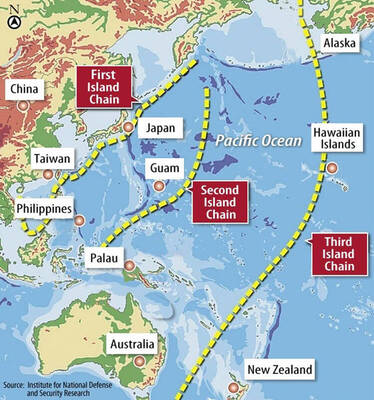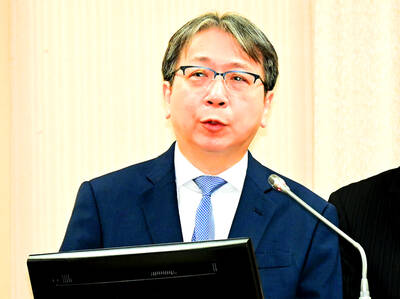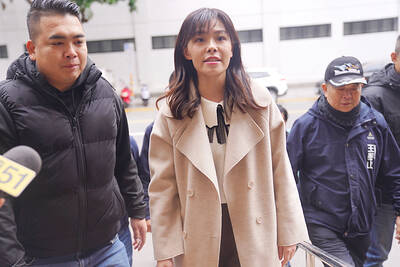President Ma Ying-jeou (馬英九) yesterday said various historical documents “clearly showed” that Taiwan “returned to the embrace” of the Republic of China (ROC) in 1945 after Japan signed the Instrument of Surrender to bring an end to World War II.
Although China ceded full sovereignty of Taiwan and all its islands to Japan in perpetuity in the 1895 Treaty of Shimonoseki, nobody would have imagined that Taiwan would “return to the embrace” of the ROC 50 years later, Ma said.
The 1943 Cairo Communique, worked out by the ROC president Chiang Kai-shek (蔣介石), then-US president Franklin Roosevelt and then-British prime minister Winston Churchill, said Japan should return Taiwan, Penghu and other territories in northeast China that it had “stolen” from the Chinese, Ma said.
The Potsdam Declaration of 1945 reaffirmed the Cairo Communique and gave the ROC the right to take sovereignty over Taiwan and Penghu, he said.
According to Ma, in its Instrument of Surrender, Japan accepted the terms of the Potsdam Declaration and former US president Harry Truman also accepted the idea that sovereignty over Taiwan was settled as the US Department of State said that the US and other Allied powers accepted the exercise of Chinese authority over Formosa, which was surrendered to Chiang.
The 1952 Sino-Japanese Peace Treaty (also known as the Treaty of Taipei) affirmed the 1951 San Francisco Peace Treaty, and stated that the Japanese government would renounce any claims to Taiwan, Penghu, the Spratly Islands and the Paracel Islands, Ma said, adding that the 1952 treaty “asserted” that the legal successor government of the territories was the ROC.
“All of this is very clear and [represents] legal and political evidence,” Ma said.
Although the Japanese built “some” infrastructure in Taiwan, Ma said, its rule was abusive and high-handed.
“However, all this is history. I am not trying to incite hatred, but while we can forgive the mistake of the Japanese invasion, we must not forget the history of blood and tears,” he said.
Ma made the remarks at the opening ceremony of a special exhibit in commemoration of the 65th anniversary of the victory in the war of resistance against the Japanese and the “retrocession” of Taiwan at Taipei Zhongshan Hall yesterday morning.
Zhongshan Hall was where the ROC government accepted the surrender of Japan in 1945.
The exhibition was organized by the Taiwan Provincial Government and the Taipei City Government.
Ma said wars must be honored, but peace must be emphasized, and the reason his administration chose to commemorate the 65th anniversary of the victory in the war of resistance was to make the public feel proud of Taiwan because “Taiwan has become the Taiwanese people’s Taiwan and the ROC’s Taiwan.”
Deputy Taipei Mayor Allen Chiu (邱文祥) pledged to build Taipei into “the capital of all Chinese of the 21st century.”
Taiwan Provincial Government Governor Lin Jung-tzer (林政則) said the eight-year war of resistance was led by Chinese Nationlist Party (KMT) troops and because of their victory, Taiwan and Penghu were able to “retrocede” from the hands of the Japanese.

The US government has signed defense cooperation agreements with Japan and the Philippines to boost the deterrence capabilities of countries in the first island chain, a report by the National Security Bureau (NSB) showed. The main countries on the first island chain include the two nations and Taiwan. The bureau is to present the report at a meeting of the legislature’s Foreign Affairs and National Defense Committee tomorrow. The US military has deployed Typhon missile systems to Japan’s Yamaguchi Prefecture and Zambales province in the Philippines during their joint military exercises. It has also installed NMESIS anti-ship systems in Japan’s Okinawa

‘WIN-WIN’: The Philippines, and central and eastern European countries are important potential drone cooperation partners, Minister of Foreign Affairs Lin Chia-lung said Minister of Foreign Affairs Lin Chia-lung (林佳龍) in an interview published yesterday confirmed that there are joint ventures between Taiwan and Poland in the drone industry. Lin made the remark in an exclusive interview with the Chinese-language Liberty Times (the Taipei Times’ sister paper). The government-backed Taiwan Excellence Drone International Business Opportunities Alliance and the Polish Chamber of Unmanned Systems on Wednesday last week signed a memorandum of understanding in Poland to develop a “non-China” supply chain for drones and work together on key technologies. Asked if Taiwan prioritized Poland among central and eastern European countries in drone collaboration, Lin

ON ALERT: Taiwan’s partners would issue warnings if China attempted to use Interpol to target Taiwanese, and the global body has mechanisms to prevent it, an official said China has stationed two to four people specializing in Taiwan affairs at its embassies in several democratic countries to monitor and harass Taiwanese, actions that the host nations would not tolerate, National Security Bureau (NSB) Director-General Tsai Ming-yen (蔡明彥) said yesterday. Tsai made the comments at a meeting of the legislature’s Foreign Affairs and National Defense Committee, which asked him and Minister of National Defense Wellington Koo (顧立雄) to report on potential conflicts in the Taiwan Strait and military preparedness. Democratic Progressive Party (DPP) Legislator Michelle Lin (林楚茵) expressed concern that Beijing has posted personnel from China’s Taiwan Affairs Office to its

BACK TO WORK? Prosecutors said they are considering filing an appeal, while the Hsinchu City Government said it has applied for Ann Kao’s reinstatement as mayor The High Court yesterday found suspended Hsinchu mayor Ann Kao (高虹安) not guilty of embezzling assistant fees, reducing her sentence to six months in prison commutable to a fine from seven years and four months. The verdict acquitted Kao of the corruption charge, but found her guilty of causing a public official to commit document forgery. The High Prosecutors’ Office said it is reviewing the ruling and considering whether to file an appeal. The Taipei District Court in July last year sentenced Kao to seven years and four months in prison, along with a four-year deprivation of civil rights, for contravening the Anti-Corruption